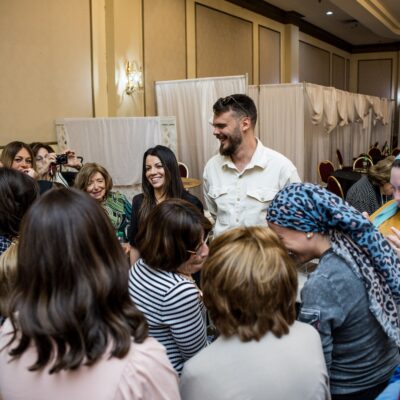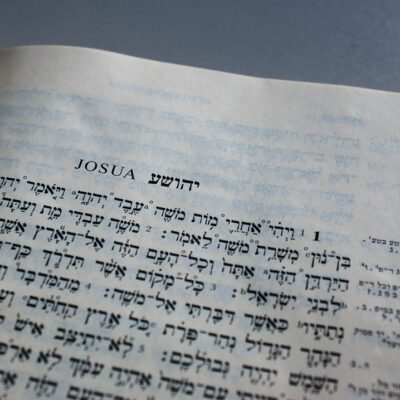A Love-Hate Relationship: Jewish Newspapers and Federations
With the advent of free news-sites on the Internet, coupled with major changes in retail advertising, traditional newspapers were struggling long before the current recession hit the U.S. And the Jewish world has certainly not been immune to these market challenges.
The North American Jewish newspaper market includes several models and generally involve some degree of financial support from the federation system. Here, in a second article from the upcoming The Journal of Jewish Communal Service‘s newest issue, Strengthening the Jewish Community: The Role of Federation. A Case Study in New York (1999-2009), a long-time and respected media professional shares his thoughts.
by Gary Rosenblatt
 The first commandment of journalism is to inform, to expose, to shed light on what has been in the shadows, while a priority of the organized Jewish community is to present a positive, united front, telling the world (and convincing ourselves), “we are one.”
The first commandment of journalism is to inform, to expose, to shed light on what has been in the shadows, while a priority of the organized Jewish community is to present a positive, united front, telling the world (and convincing ourselves), “we are one.”
Somewhere between the activist eager to embarrass the organized community and the communal official charged with upholding the establishment, we find the Jewish journalist, struggling each week to “reconcile the ethic of journalistic honesty with the ethic of Jewish responsibility.”
That quote is from a long essay called “The Jewish de-Press” that I wrote for Moment magazine in 1977, underscoring that while the Jewish journalist’s balancing act is difficult and often frustrating, it’s certainly not new.
In my 16-year tenure at The Jewish Week, plenty of tensions have arisen between two important Jewish institutions in New York – The Jewish Week and UJA-Federation of New York – that have long had a love-hate relationship, each working to educate the community and heighten Jewish identity, but at times clashing sharply over their respective roles. There have been threats by UJA-Federation lay leaders, angered by stories they didn’t like, to cut off Federation’s financial support of the paper, plus an attempt to impose a scorecard that rated our coverage, and many other complaints have been expressed.
Jewish `Weaklies’
The first English language Jewish weekly in the U.S., The Asmonean, began publication in New York in 1849. It lasted nine years. Ever since, there have been American Jewish weeklies around the country, but few distinguished themselves journalistically over the years. Rabbi Stephen Wise, the Zionist and Reform leader in the first half of the 20th century, referred to them as the Jewish “weaklies” since they were seen primarily as publicity vehicles for local Jewish organizations.
Today, there are several standout publications, but most still have small budgets and staffs and few full-time reporters, with little incentive to probe into the problems and foibles of established local institutions. Such investigative work is costly and time consuming, and certain to upset communal leaders who may be the subjects of critical stories. Moreover, many readers don’t want to see their charitable organizations come under criticism. The same readers who look to their daily newspaper for hard-hitting reporting tend to prefer positive stories when it comes to their local Jewish newspaper. Most subscribers are affiliated with the organized Jewish community and want to feel good about its activities, and Israel’s, not embarrassed by them. While Jewish newspapers were struggling financially and less than anxious to take on the establishment or engage in controversy, a number of Federations saw the potential of these journals to enlighten their donors about Jewish life at home and around the world as well as spread the news of their own activities and accomplishments. Thus, a marriage was born, but not in heaven.
At last count, there are about 85 weeklies or biweeklies that belong to the American Jewish Press Association, and about half of those are owned or affiliated with local Federations. (UJA-Federation of New York has a marketing contract with The Jewish Week, with the Federation purchasing subscriptions for many of its donors; there is no editorial relationship between the Federation and the newspaper.) There has always been tension between the independent Jewish newspapers and the Federations, and even between the Federation papers and the Federations.
At issue is what constitutes news and how it is reported, an ongoing debate with no clear parameters. A few Federations have a largely hands-off attitude toward the newspaper, while most are involved on some level. Some frown on giving high-profile coverage to prominent members of the community who are not donors to the Federation. Some Federation execs have been known to review the pages of each issue of the paper before publication, acting as the ultimate editor. And one frustrated editor of a major city Federation paper told me “the editor of Tass [in the former Soviet Union] has more editorial control than I do.”
That is not to say that the independent papers operate with a free hand.
They, too, are subject to pressure from prominent organizations, individuals and advertisers. What I’ve learned over almost four decades in Jewish journalism is that in determining the quality of a community’s newspaper, in addition to the goals and talents of its staff, much depends on the professionalism, and personal relationships, of and among the leadership of the newspapers and the community, and each paper has its own unique dynamic. Ideally, mutual respect and appreciation of the other’s role prevail.
New York Landscape
In New York, The Jewish Week was independently owned and financially troubled in the early 1970s when I first joined the staff for two years as assistant editor. Its top editors were veteran Jewish journalists with high professional standards. But with scarce advertising and a small circulation, the paper had little impact on the community. We could publish a “scoop” on the Conservative movement’s decision to count women in the minyan, as we did in 1973, and there was virtually no reaction until The New York Times published a piece on the front page a week later.
As The Jewish Week’s financial state became more precarious, a group of lay leaders, working with UJA-Federation, came up with a plan to save it by affiliating with the Federation. It seemed like a win-win: financial security for the paper, and a medium for the Federation to inform its constituents about international, national and local Jewish news, including the good works of its constituent agencies.
During the protracted negotiations, though, I was offered and accepted a job to edit the Baltimore Jewish Times, Maryland’s only Jewish weekly. I stayed in Baltimore for 19 years, and though the conditions were as good as one could hope for – the paper was independent, family-owned and financially successful – we had our share of clashes with the local Federation over stories we covered, or attempted to cover. Among the more memorable disputes were ones over our reporting on the JCC’s plan to open on Shabbat (Baltimore has a large and fervent Orthodox community), and on the creation of the Harry and Jeanette Weinberg Foundation, given that Harry Weinberg at times threatened to withhold funds if the Federation didn’t keep us off the story.
In 1993, I accepted the position of editor and publisher of The Jewish Week, walking into a storm of media and communal attention over whether or not the paper should continue to receive Federation funds, in the form of subscriptions for donors. Several for-profit Jewish newspapers were vocally opposed to the arrangement. They framed the dispute as being over journalistic freedom; one referred to The Jewish Week as “the Pravda-like organ of UJA-Federation” – but it was really about dollars. They all wanted a slice of the Federation pie.
The Federation argued, though, that only The Jewish Week covered the metropolitan New York Jewish community in depth, and that Federation was getting a bargain, spending a nominal sum per donor to keep constituents informed and involved.
And we at The Jewish Week asserted that the issue of media credibility should focus on integrity. Not only were we independent editorially, we noted that PBS, the BBC in England, CBC in Canada and Israel Radio were highly respected enterprises despite their relationship with government.
In the end, the issue died down after Federation offered donors on Long Island a choice between receiving The Jewish Week or the local Jewish paper, and The Jewish Week was the overwhelming pick.
That is not to say the last decade and a half has been smooth sailing. While we at the paper felt that we covered the Federation and its agencies in proportion to the overall scope of Jewish life including the Mideast, the U.S., and New York Jewry, overall many lay and professional leaders felt it was insufficient. At times the pressure was intense, and included one short-lived experiment, a low point, in which a scorecard was devised to attempt to quantify, in terms of number of stories, story placement, headlines, etc., how we were doing.
But of course the central issue was not how many inches of coverage we gave Federation and its agencies. It was about whether the central mission of the newspaper was to promote those worthy institutions or, more indirectly but I believe more importantly, to inform and entertain the readers, and thus engage them in Jewish life and issues.
Educated Jews make educated decisions about their community, we insisted.
Sometimes donors complain to Federation officials about a story in the paper they take exception to, but in fairness, The Jewish Week is solely responsible for what is published.
Too often, I suspect, we at The Jewish Week have imposed a kind of self-censorship on ourselves, no doubt subconsciously at times, laying back on stories in the community we should be pursuing for fear of the negative fallout. At the same time, we no doubt pass up feature stories each week about the good works of various communal agencies, for lack of space and/or news-oriented tensions.
Week in and week out, though, I believe the experiment in walking the tightrope between journalistic and communal responsibility works reasonably well. I am sure there are times Federation leaders believe we should be giving more or less – attention to a particular story. And there are times when our staff has been frustrated to see a major Federation-related story given first to the local daily press.
“We carry their water every week,” one of our editors complained about Federation, “and when a big story comes around, they give it to the Times.”
But there have been increasingly open lines of communication of late, and a willingness to discuss delicate issues before they come to press rather than after the fact. Much of that, I note in all candor, comes from the fact that John Ruskay, the CEO and executive vice president of UJA-Federation, and I have known each other for more than 30 years, and have much respect for each other, and for what our respective institutions stand for and are trying to accomplish. That sense of trust can go a long way during difficult times. It also helps to have a committed and supportive board of directors at the paper that appreciates its vital, and often delicate, role.
My request of Federation leaders has always been for them to open up more to us about their work and decision-making, recognizing that readers would be interested, for example, in learning how an annual campaign is crafted and carried out, especially at a time when transparency is becoming increasingly valued, if not demanded.
The late William Frankel, who edited The London Jewish Chronicle, once asserted that “a newspaper is independent only when it is financially independent,” and if that is not the case, “it were better it did not exist at all.”
Strong words, but in reality, the Chronicle, like every other newspaper, is subject to financial, political and other forms of pressure on a daily basis. How one deals with those demands – whether we can do our jobs with integrity and maintain the trust of our readers – is the key. Credibility is our only stock in trade.
In the end, there will always be tensions between The Jewish Week and UJA-Federation, some of it healthy, some of it not. But as long as there is support for the missions of each (recognizing that they are not the same), and respect for the professionalism of their staffs, the two institutions can continue to serve the community with distinction, if not always harmony.
Gary Rosenblatt is editor and publisher of The Jewish Week.
This article appears in The Journal of Jewish Communal Service, Vol. 85, No.1, Strengthening the Jewish Community: The Role of Federation. A Case Study in New York (1999-2009). Reprinted with permission.
To receive the complete issue, you can subscribe here.













